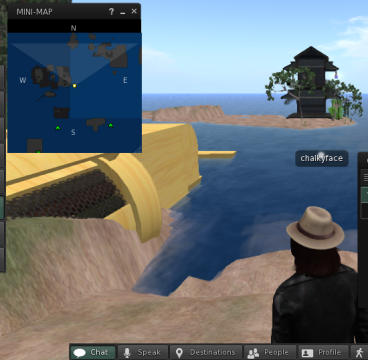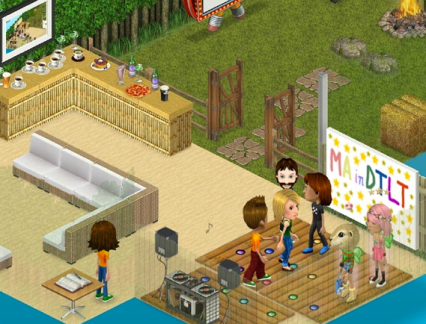
The Self Illusion
In the self Illusion by Bruce Hood the author argues that ‘there is no you inside your head’ and that our sense of self depends on our bodies, environment and others around us (2012, p3). Despite this he stresses the importance of maintaining this illusion of self to feel in control of our lives, remain motivated and function in general (2012, p.218). Dörnyei. Z, sees the motivation to bridge the gap between our current self perception and our ‘ideal’ self as fundamental to language learning (2009, p.4) However, this transition from L1 identity to L2 cannot be seen as a journey with one destination if we consider our identity to be multifaceted, context dependent and in constant flux.
For a deeper understanding of the self illusion and the relationship between language learning and identity please see the video below:
The Third Place
Language is inextricably linked to culture and identity and when an individual acquires more than one language they may shift between identities or roles to suit different cultural or interactional contexts (Kramsch. C, 1998, p.82). Therefore, instead of a division between target and local culture, Kramsch suggests that learners create a ‘third place’ between cultures (Kramsch, C 1993, p.9). Creating an entirely new L2 identity is more difficult for adult learners though, as they have already established a strong culturally embedded L1 identity(Wehner, 2011 p.281). We should therefore encourage learners to find a third place, combining and consolidating parts of their cultural identity with the target culture.

Role play
Lemke claims that in order to communicate effectively in a language, we need to play an appropriate role or take on a specific social identity. He also expresses concerns over the ability of limited classroom instruction and context to provide learners with sufficient time and space to develop these identities. (2002, p.68) At the same time, Taylor claims that the medium in which we ‘exist’ and the experiences we have online and in virtual worlds can also reshape our ideas of self image and identity (Taylor, 2002 p.57). If this is true, virtual environments, such as Second Life, could provide an immersive third space without time restrictions that is removed from a learner’s L1 social context. This would allow learners to develop strong L2 identities, increase motivation and consequently aid language acquisition.
A closer look at virtual worlds
Second life
Apart from the benefits of identity recreation with avatars and role play, there are many more affordances of virtual worlds like SL for language learning, as outlined by Warburton below (2009, p.421).

Despite this, I have rarely seen second life or any other virtual worlds actively employed in language teaching. So why is this?

For me, Second life’s biggest problem is its complicated user-unfriendly interface which seems to require a laptop or desktop with keyboard to navigate. I also get the impression that people are moving away from these devices to tablets and mobiles, especially younger generations. The portability of mobiles and tablets make it easier to dip into a virtual world at any time and maintain an online presence. Adding to this are the rather dated graphics and jerky physics of the game which make it unappetising to the eye. With the wealth of graphically rich online console and tablet games, why would anyone bother with SL. Also, As Milton mentions (2013, p.7), from an institutional perspective it would seem that the cost of computers powerful enough to run the software and the maintenance needed to keep it up to date is enough to stop SL before it even gets off the starting line in most schools.
SmallWorlds
An alternative to SL could be SmallWorlds which seems to facilitate shorter session times to complete simple tasks. In fact, the main attraction of this virtual world for me as a language teacher is the ease of use. It took me only ten minutes to choose a hair cut, a pair of trousers, order a cocktail, decorate my house, take a picture, share it, find the DTLT Garden and make a couple of friend requests. It also has a point and click interface making it potentially compatible with tablets and phones. Although this is currently not the case. Another feature I noticed is the ability to add it on to the social network Facebook, which makes it easier to integrate it into a PLE. The graphics might not be as sophisticated as SL but they are colourful and pleasing to the eye, you just have to accept that it is not trying to look realistic.
Here I am in the town centre on SmallWorld

My experience as a learner in SmallWorlds
When I teleported to the town centre in SmallWorlds I was surrounded by avatars, avatars with real human beings behind them. I suddenly started to behave as if I was actually there, by this I mean that I was aware of my body language and personal space. I avoided lurking around people without saying hello or staring at anyone for too long. I eventually moved away from the crowd and found a safe little corner of my own. I think I had experienced bodily presence in a virtual world. Taylor also found that avatar position in The Dreamscape could transmit feelings of anger, friendship or even love.(2002, p.43)
Language learner anxiety
Looking back at week 9 of the course, I find I disagree with Roed when he states that interactions online are less anxiety inducing (Roed, 2003, p.155). I also feel that Drayfus’s need for embodiment to connect with our ‘messy emotions’ is nullified by my recent experience (Drayfus, 2001, p37). I therefore agree with Blake when he criticises Drayfus’s emphasis on physical embodiment for effective language learning. I also agree with Blake’s focus on the role of imagination in creating feelings of commitment and risk online (Blake 2002, p385). This means that we might need to reconsider issues related to the affective filter and language learner anxiety in the context of virtual worlds.
Anonymity
At the same time, there seems to be a strong sense of anonymity in most virtual worlds. On the one hand this might be good for language learning anxiety but on the other it could encourage anti-social behaviour without fear of retribution. Despite this, I think it is great for meeting up with people you already know or have met online in other contexts.
During our tutorial we came across a few random people with animal heads and butterfly wings. Luckily, they were not anti-social.

So, what next?
The most exciting realisation from wandering around SmallWorlds was how easy it would be to set up text-based pair and group work, mingles, surveys or even a find someone who. In fact, I can see classroom activities translating quite well into these environments but what is more interesting is how learning can be enhanced by virtual worlds. I have briefly introduced SmallWorlds to a pre-int class and an advanced class, and I intend to host a christmas party in the DTLT space which would otherwise be impossible to organise. Adding to this, virtual worlds allow us to link up learners from different geographic locations to take part in the same ‘classroom’ activity. For example, each class could prepare questions for the other about life in their part of the world. Due to this global reach, these kinds of activities can also be used to facilitate immersive interaction with native speakers of the target language no matter where you are. Although using virtual worlds for language learning is not with out its difficulties, I think it is clear that there is great potential in them for language learning. Also with technologies like oculus rift and google glass on the horizon I believe that virtual worlds will play an ever more important role in education in general.
Here Michael Bodekaer looks at the future of science education, but it is easy to imagine the same concept applied to language learning.
References
Blake, N. (2002) Hubert Dreyfus on Distance Education: relays of educational embodiment. Educational Philosophy and Theory, 34, 4, pp. 379-385
Dörnyei, Z. and Ushioda, E. (2009) Chapter 1, Motivation, Language Identity and the L2 Self: A theoretical Overview. Multilingual Matters.
Dreyfus, H. (2001) On the Internet (ch 2). Routledge: London
Hood, B. (2002) The Self Illusion UK: Constable
Kramsch, C. (1993) Context and Culture in Language teaching. Oxford University Press.
Kramsch, C. (1998) Language and Culture. Oxford University Press.
Lemke, J.L. (2002) Language development and identity: multiple timescales in the social ecology of learning. In Kramsch C.J. (ed.)Language acquisition and language socialization: ecological perspective. London; New York: Continuum. pp.85-95.
Milton, J. (2013) Second Language Acquisition via Second Life. In Chapelle C.A. (Ed) The Encyclopedia of Applied Linguistics. Blackwell Publishing Ltd.
Roed, J. (2003) Language Learner Behaviour in a Virtual Environment. Computer Assisted Language Learning, 16, 2-3, pp. 155-172.
Taylor, T. (2002)Chapter 3, Living Digitally: Embodiment in Virtual Worlds
T.L. From R. Schroeder (Ed.) The Social Life of Avatars: Presence and Interaction in Shared Virtual Environments. London: Springer-Verlag.
Wehner, A, K. Gump, A, W. Downey, S. (2011) The effects of Second Life on the motivation of undergraduate students learning a foreign language. (Computer Assisted Language Learning, 24, 3, 277-289.)
Images
Matrix image
http://volts48.deviantart.com/art/Neo-is-plugging-himself-into-Death-Battle-523648811 (viewed on 8/12/15).
Second Life image
http://secondlife.com/(Screen shot taken by John chalk 8/12/15)
SmallWorld image 1
http://www.smallworlds.com/ (Screen shot taken by John Chalk 8/12/15)
SmallWorld image 2
https://www.flickr.com/photos/dt4lt/22890265494/in/album-72157661431656210/ (viewed on 8/12/15)
Third place image
http://blc.berkeley.edu/2012/01/15/third_place_in_the_french_classroom_a_separate_space_for_a_new_beginning/ (viewed on 8/12/15).
Video
Bodekaer, M. (2015) Reimagining education TEDxCern. https://www.youtube.com/watch?v=IYpovgka-9Q (Viewed on 8/12/15)
Hood, B. (2012) the Self Illusion: How Your Brian Creates You – TAM 2012 https://www.youtube.com/watch?v=ZIDWcWn21gg (Veiwed on 8/12/15)